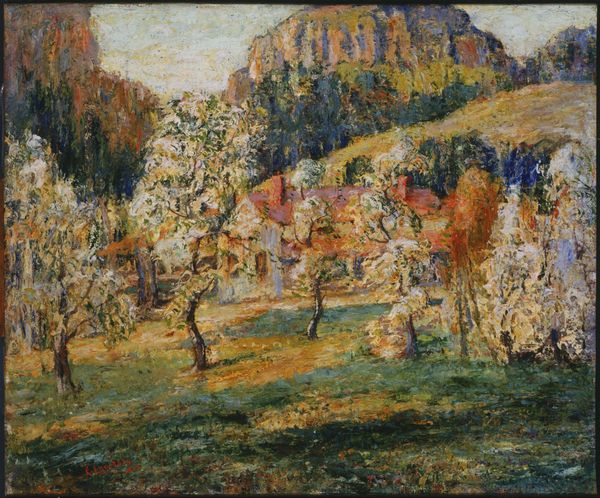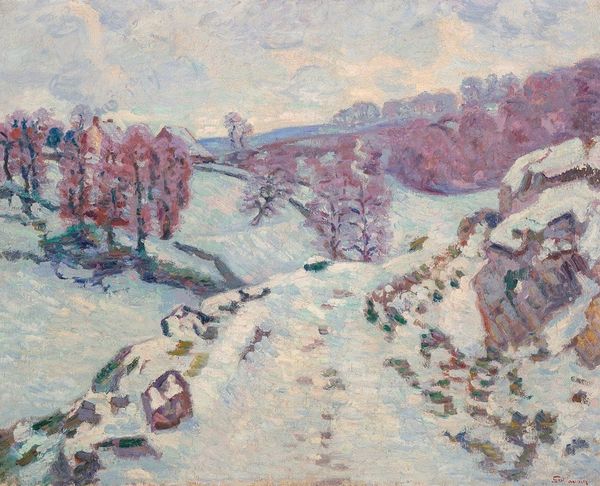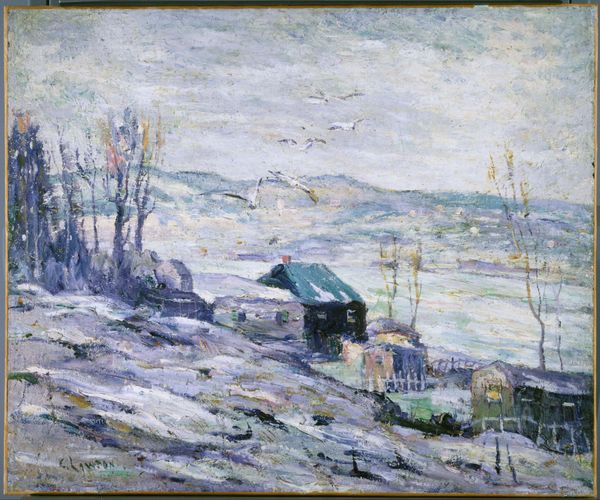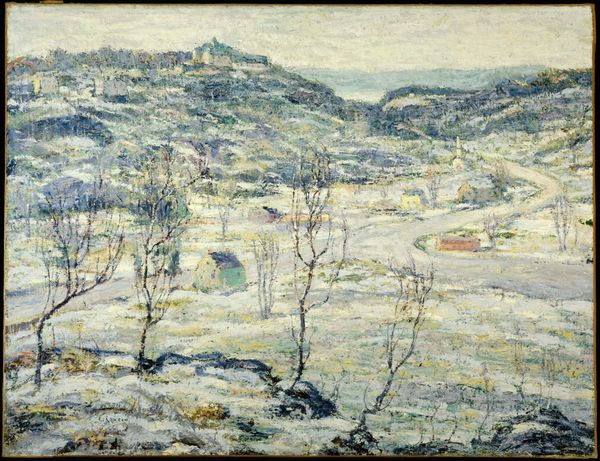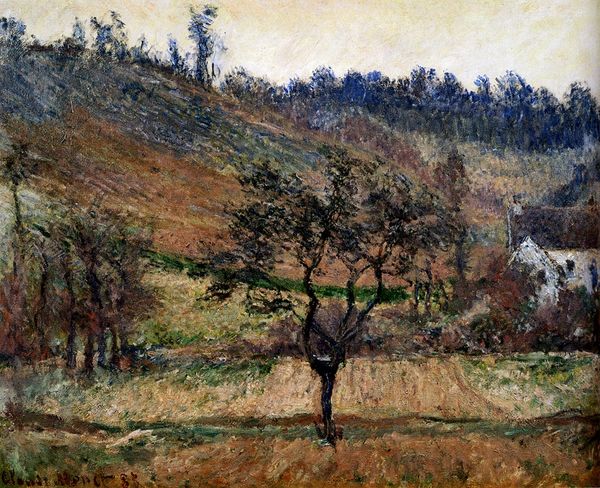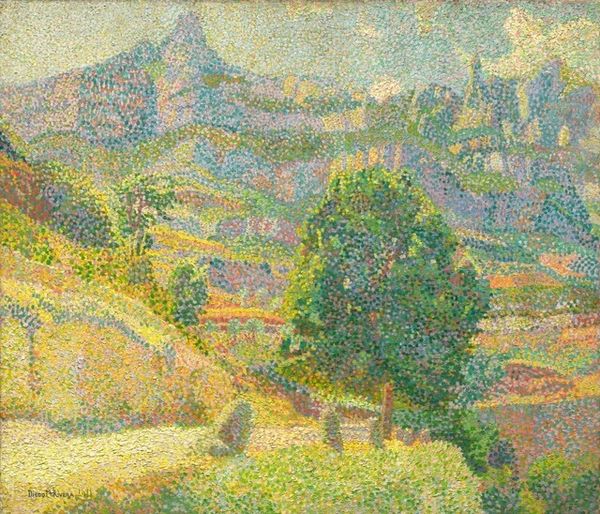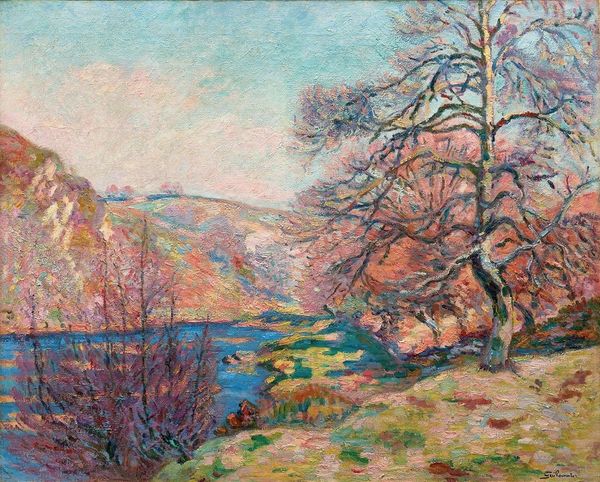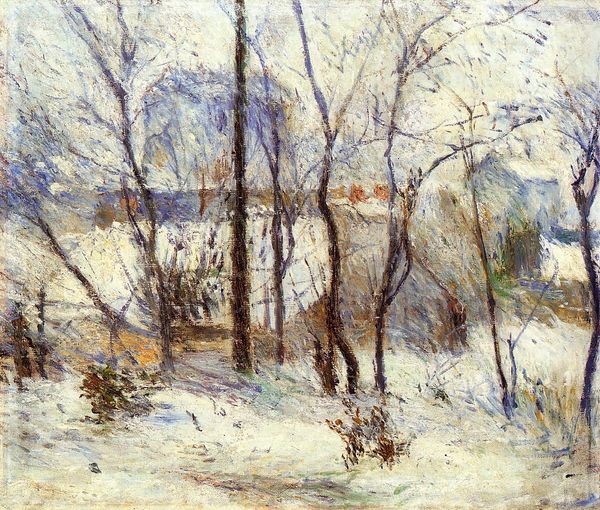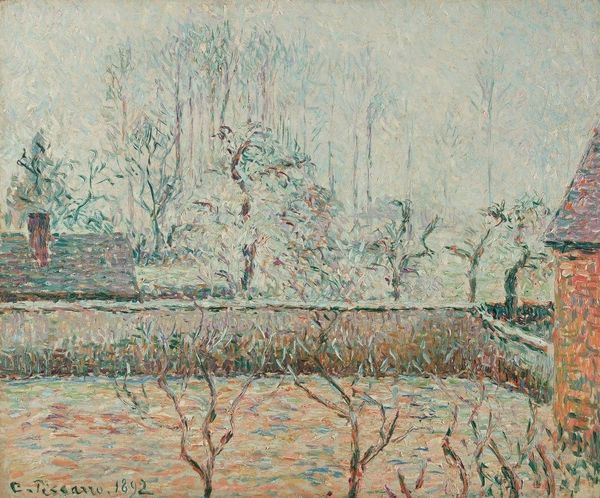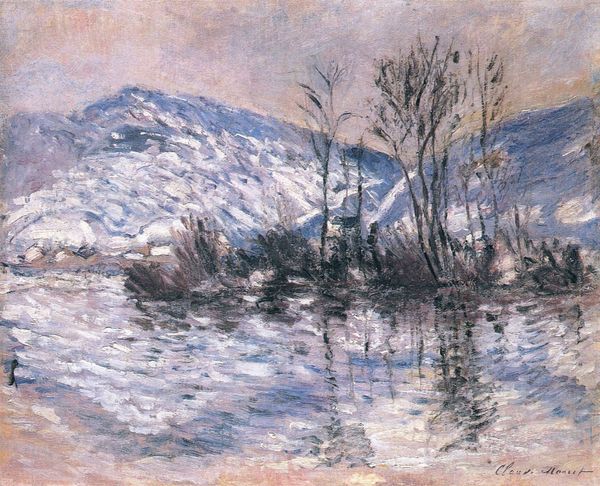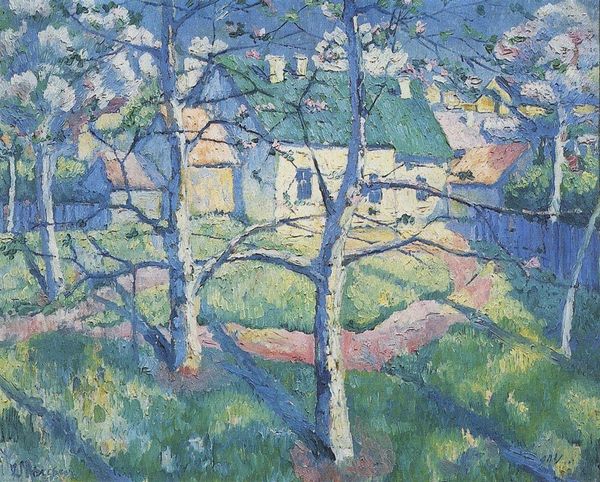
Dimensions: 101.6 x 127.6 cm
Copyright: Public domain
Curator: What strikes me first about Ernest Lawson's "Winter," painted around 1920 and held here at the Detroit Institute of Arts, is its muted yet hopeful palette. The snow isn't stark white; it’s a mix of blues and yellows that give it an almost dreamlike quality. Editor: Dreamlike is spot on. It feels hushed, muffled even, like you’re seeing the world through a soft wool scarf. There’s something melancholic but beautiful about that bare tree reaching up—as if yearning for something more amidst all that snow. Curator: Lawson was known for his landscapes, and he painted this "Winter" en plein air, which means he painted it outside, on location. The technique allows for an immediacy and capturing of light that's hard to replicate in a studio. Editor: You can almost feel the chill in the air, right? It’s not just a depiction of a season; it’s the mood of winter—the stillness, the quiet expectancy before spring. And I love the way he renders the house in the background; it almost feels as though it's melting into the snow-covered ground. Is it safe to suggest a connection to mortality, or is it me? Curator: Well, the landscape itself, especially during winter, has often been used as a metaphor for the cycles of life, death, and renewal. Lawson’s use of Impressionist techniques to depict a rural setting, rather than a bustling city, also sets it apart. Editor: True. But there's something deeply American about the painting. That rugged individualism of the little house bravely facing winter alone. It’s not grand or romantic in the European sense. Curator: And even Lawson himself; as one of "The Eight", he challenged established artistic conventions in America by focusing on everyday life. His approach to landscape painting played a crucial role in defining American Impressionism as its own entity. Editor: Makes you think about how something so seemingly simple—a winter landscape—can hold so many layers of meaning. Curator: It reflects the social context in the post war era. But ultimately, art evokes individual perceptions, so it's very compelling to know your immediate thoughts, it's exactly that that informs the role of art in culture. Editor: Exactly. And that, in turn, enriches how we experience life outside the museum walls.
Comments
No comments
Be the first to comment and join the conversation on the ultimate creative platform.
